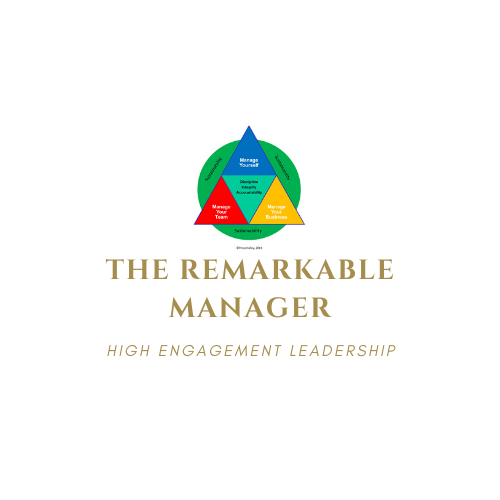Building a Winning Culture Through Standards & Expectations
A coaching client recently came to our monthly call with a challenge she was facing that I don’t hear very much in the performance coaching work I do. “My teenage children refuse to follow the rules my husband and I have established for our home,” she said. As we talked about it more and what rules exactly the teenagers were not following, I recalled raising teenagers myself and some of those same challenges. I also recall experiencing similar problems with my sales team at work, where I was a first-line sales manager.
Are you Defining or Defaulting to Your Team Culture?
Whether your team is at home or work, a culture will develop. The question is, will you (the leader) design the culture you want or default to the culture that appears. Hint: if you choose the default, you won’t like what you get. It never a good idea to begin building from the lowest common denominator.
We should probably define what we mean by culture. Author Daniel Coyle, in his book “Culture Code,” says that “Culture is a set of living relationships working toward a shared goal. It’s not something you are. It’s something you do.” Culture is the connection between behaviors, beliefs, and emotions that are expected, reinforced, and rewarded by and within a particular group.[1] Whether that particular group is your family, your neighbors, or your team at work, you, as the leader, can define the behaviors, beliefs, and emotions that are expected, reinforced, and rewarded.
Moving from Rules & Regulations to Standards & Expectations
As I spoke with my coaching client with the unruly teenagers, I recalled a lesson I had heard from author and speaker, John Maxwell. Dr. Maxwell taught that as leaders, we need to move away from having rules and regulations to establish our cultural norms and move toward setting standards and expectations that lead us to where we want to go.
Rules and regulations establish a culture where the minimum is expected, and the bar is set low, where an environment where standards are set and expectations are communicated, the bar is raised, and the team can reach for new highs.
Rules and regulations can cause followers to make excuses and explore what they can get away with, where an environment where standards are set and expectations are communicated the sky is the limit. Followers know what is expected and are given the room to excel.
Rules and regulations cause followers to think about what NOT to do; standards and expectations allow followers to determine what to do and how to do it.
Rules and regulations make followers feel like you don’t trust them; Standards and expectations establish an environment built on trust.
So, the question becomes, as a leader, how do you set standards and communicate expectations?
Setting the Standard
One thing I have learned as a leader and as a parent if YOU don’t have a personal standard for performance in your own life, it is very difficult to expect those in your circle of influence to have a standard of performance. In my Remarkable Manager® Model, I reference three Guiding Behaviors that have helped me maintain a high standard – discipline, integrity, and accountability. Your level of commitment as the leader to high standards will determine how your team performs in the day-to-day challenges of business.
I know that when I am leading a team, there are some standards that I lean toward, I’d love to know what you think and what some of yours are:
1. How we do the work – timeliness, accuracy, collaboratively
2. How we communicate with each other and with clients
3. How we embrace accountability
4. How we measure success
5. How we handle mistakes
Communicating Expectations
The best way I have found to communicate expectations and reinforce the standards we agree to is through constant feedback and coaching. Many leaders have high expectations but fail to reinforce them through regular, in the moment feedback. It only takes one or two times of letting one of your standards for performance slide before that standard is no longer recognized as a standard. High performing teams hold themselves accountable for maintaining high standards.
The parent of the teenagers that I mentioned earlier agreed that they were living by rules and not a high standard. They agreed to immediately begin working on what those standards should be for their home and how they would remain accountable to each other for living to those standards. People can’t live up to expectations if they don’t know your expectations.
[1] Joerg Schmitz, Cultural Orientations Guide, 5th Edition



As a leader, one of the fastest ways to increase influence with others is to improve how you communicate. More specifically, we need to improve how others perceive our communication.